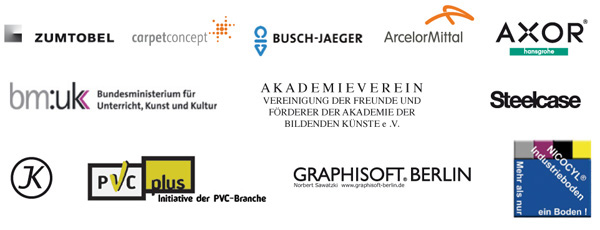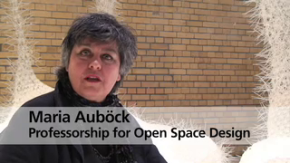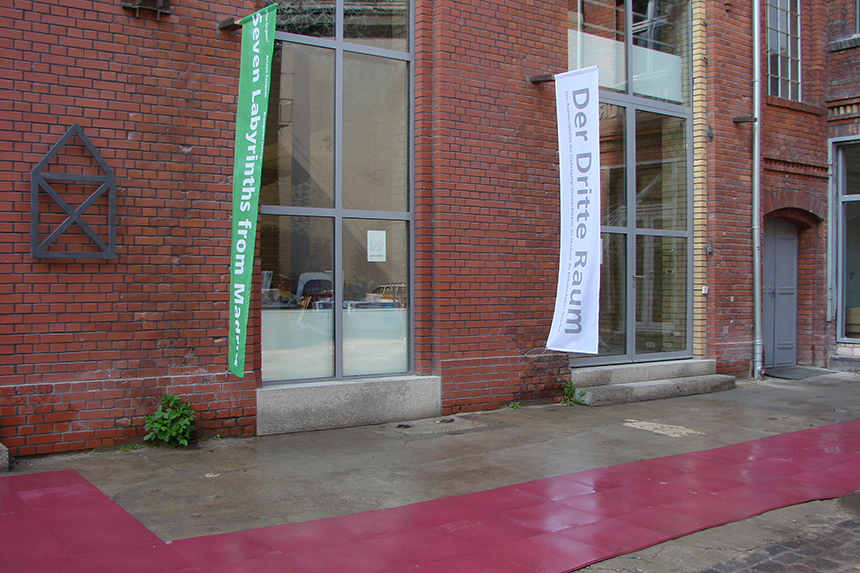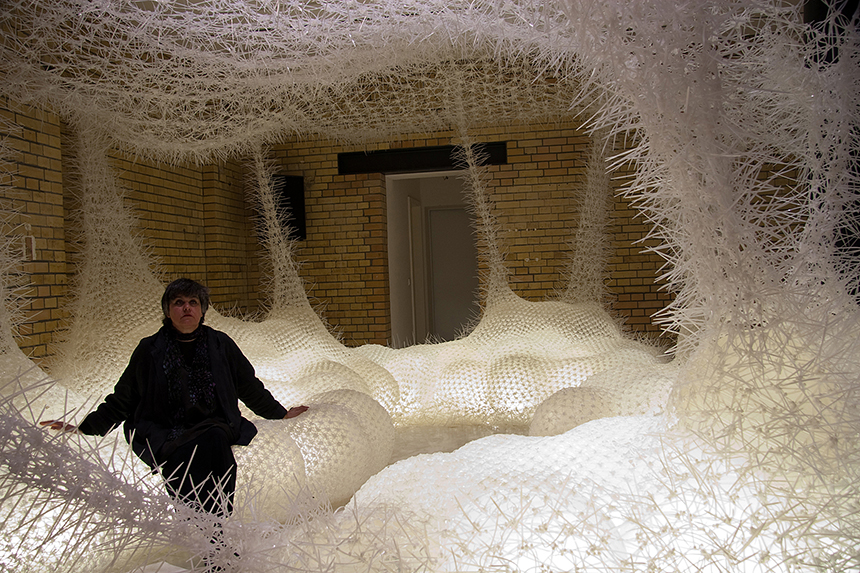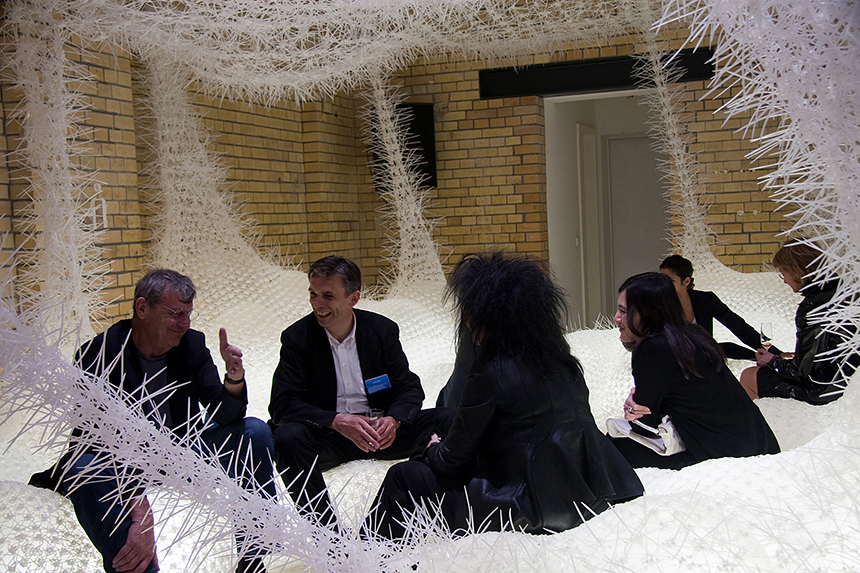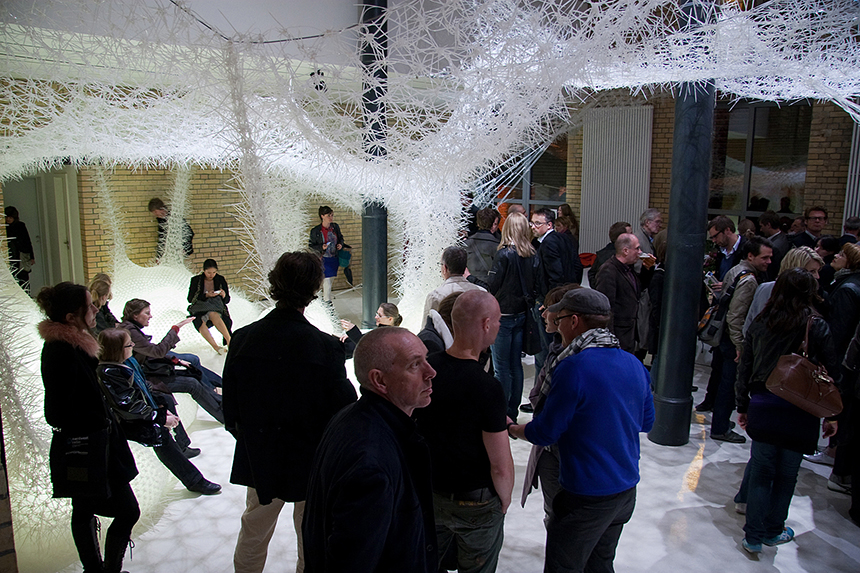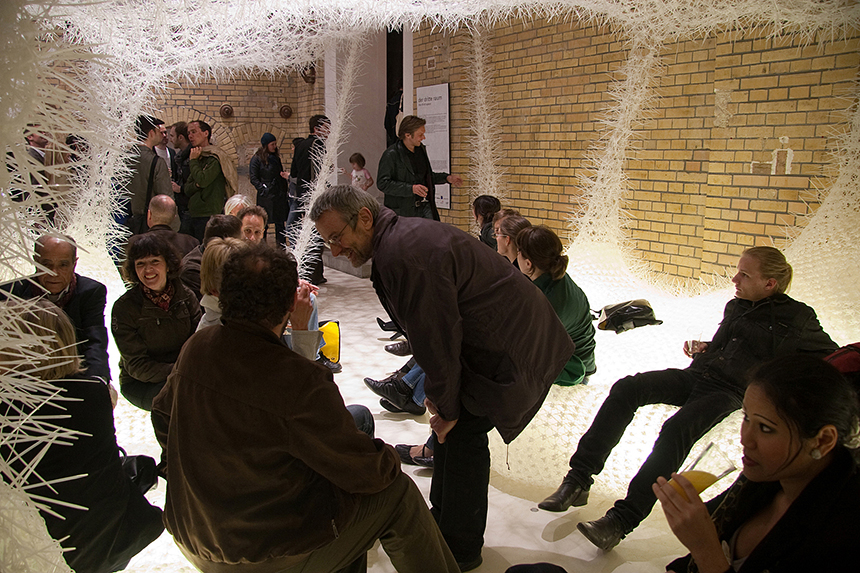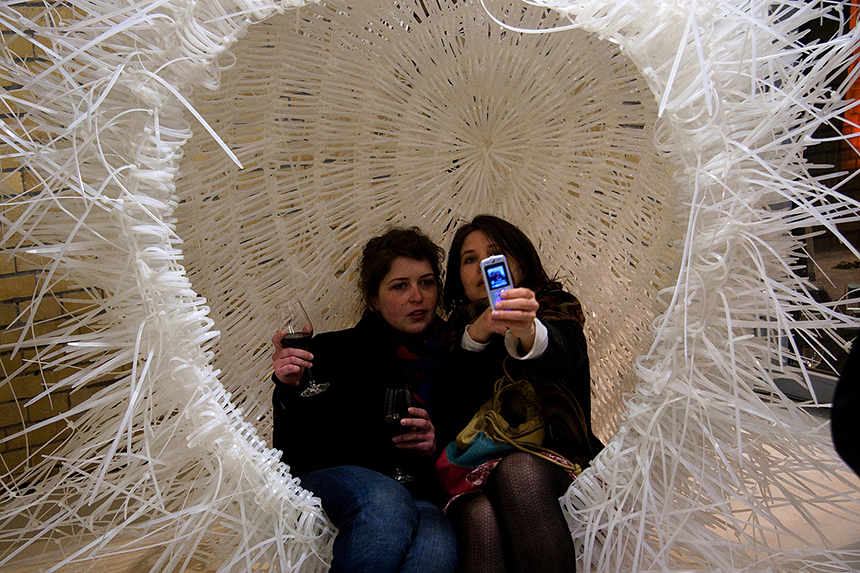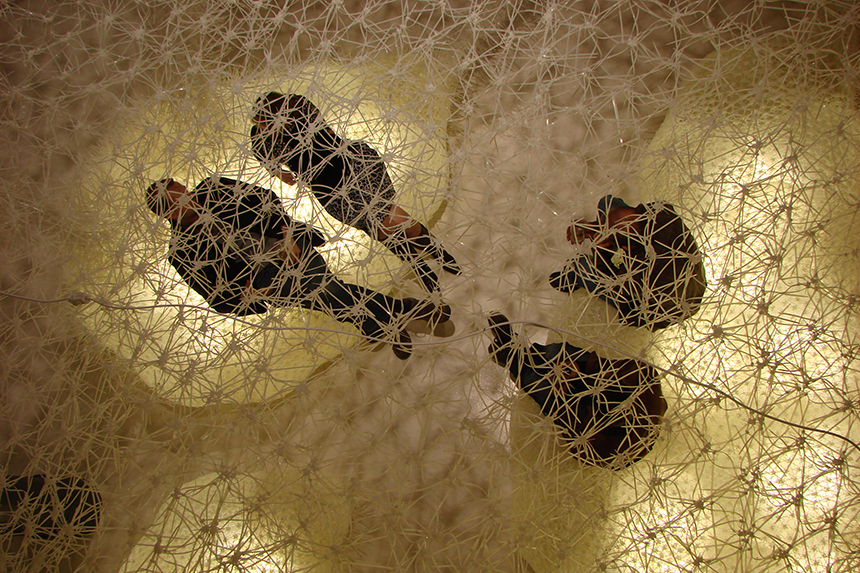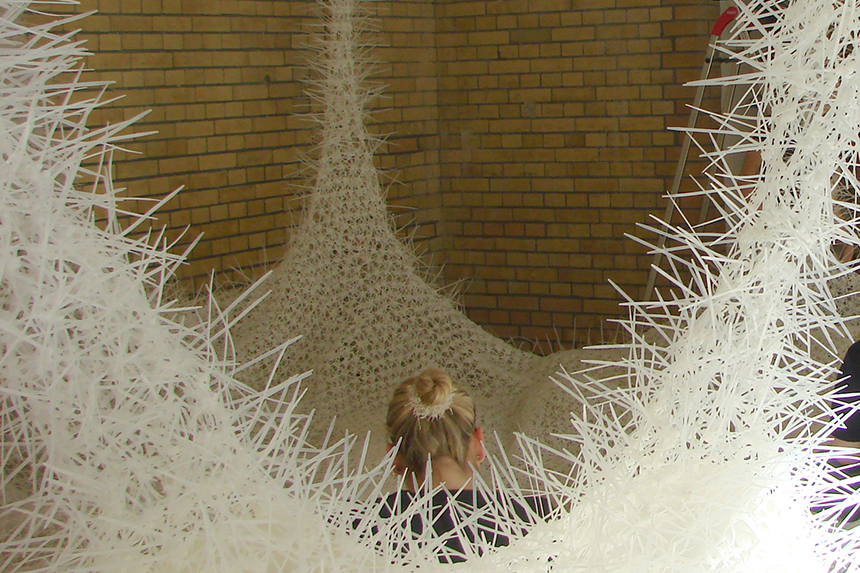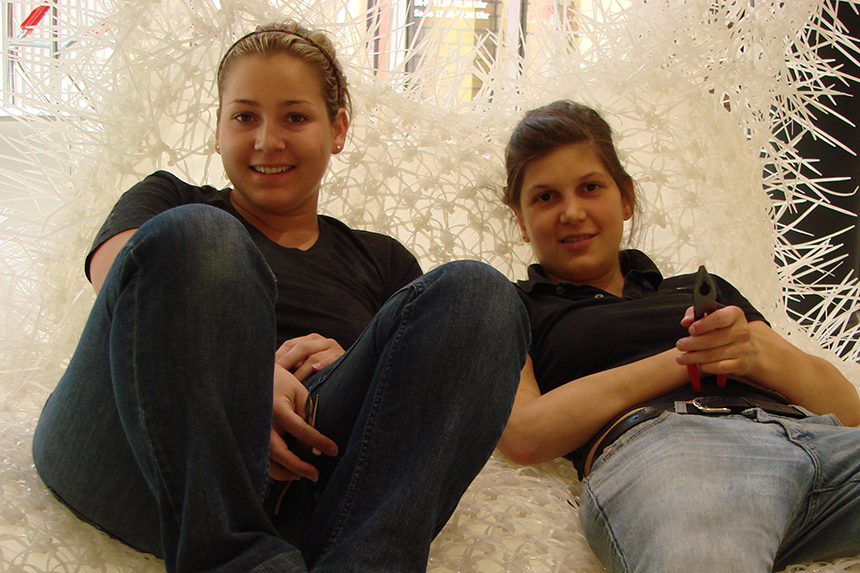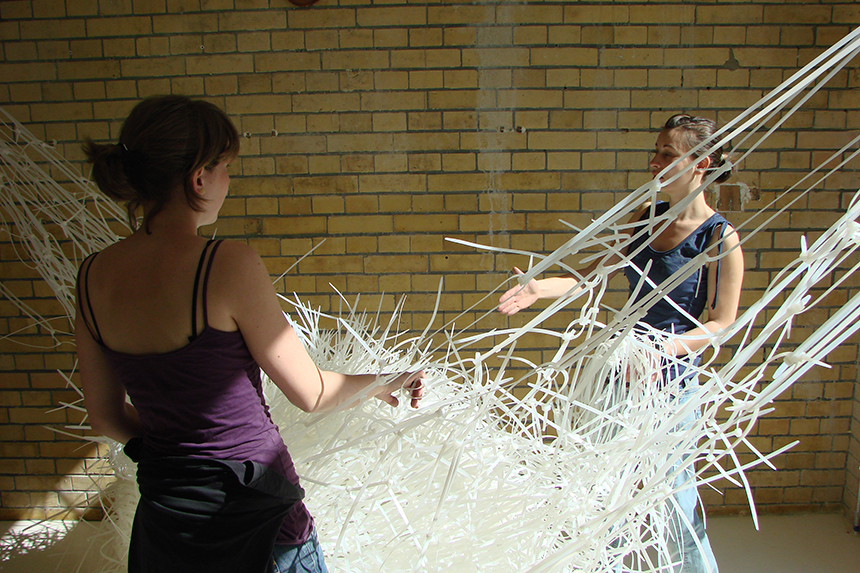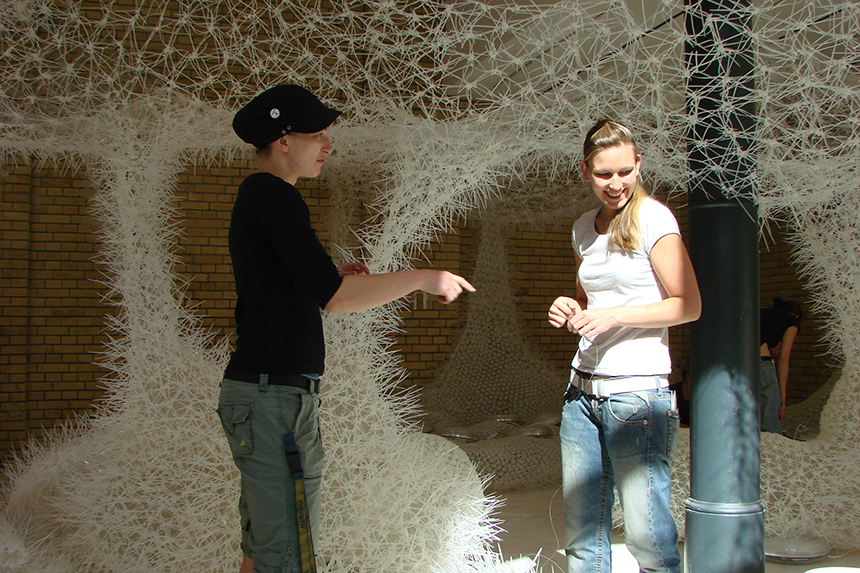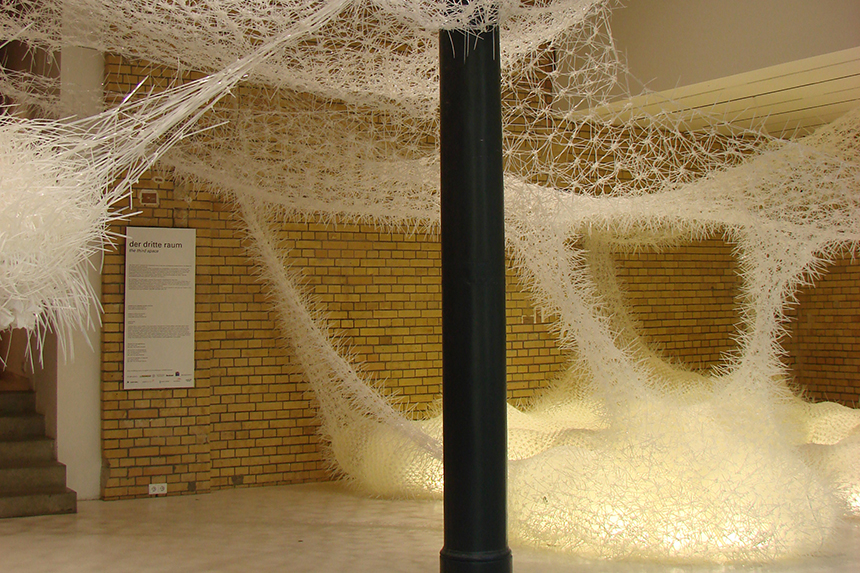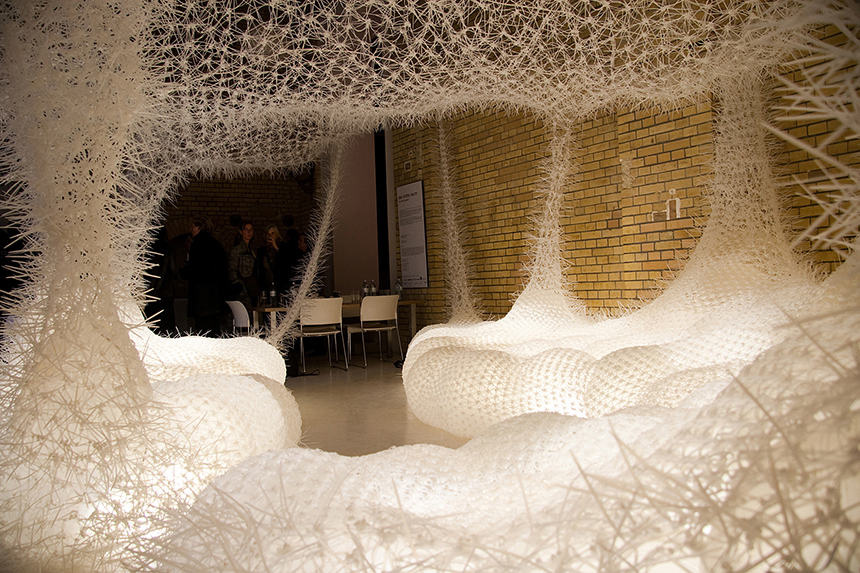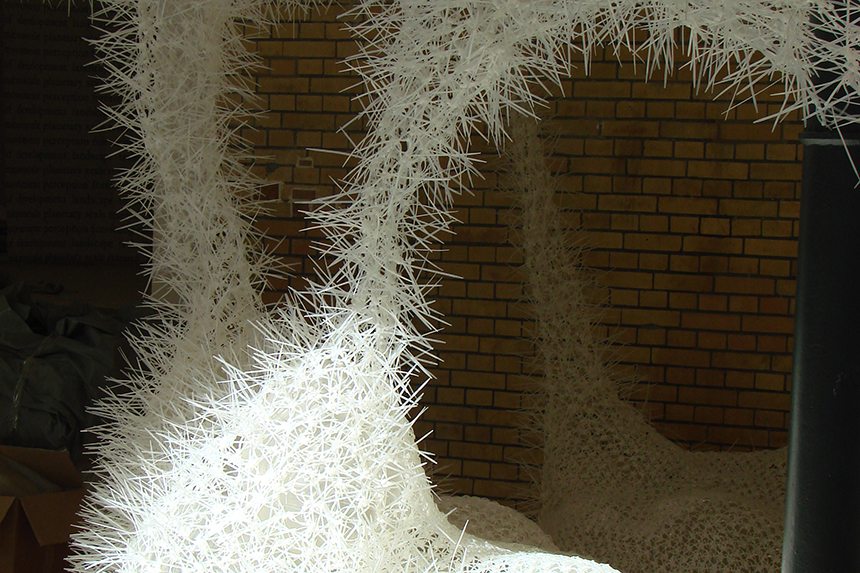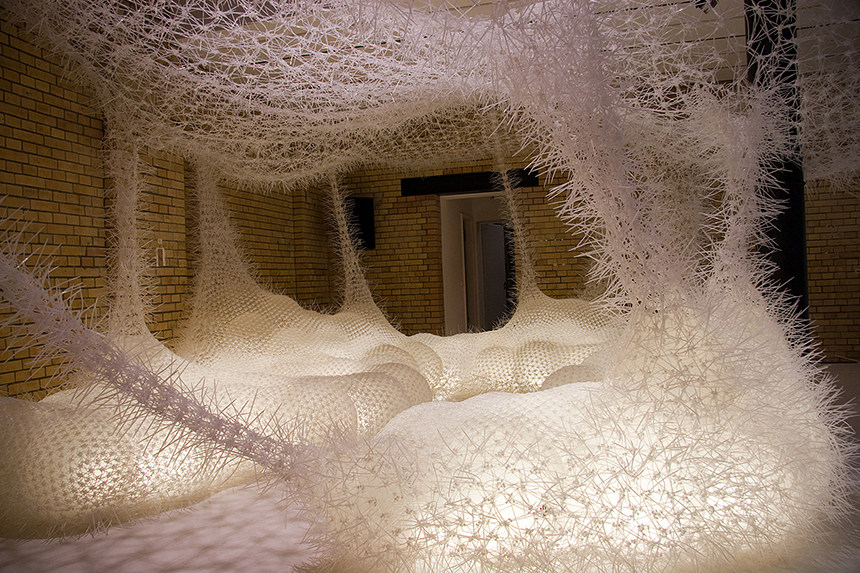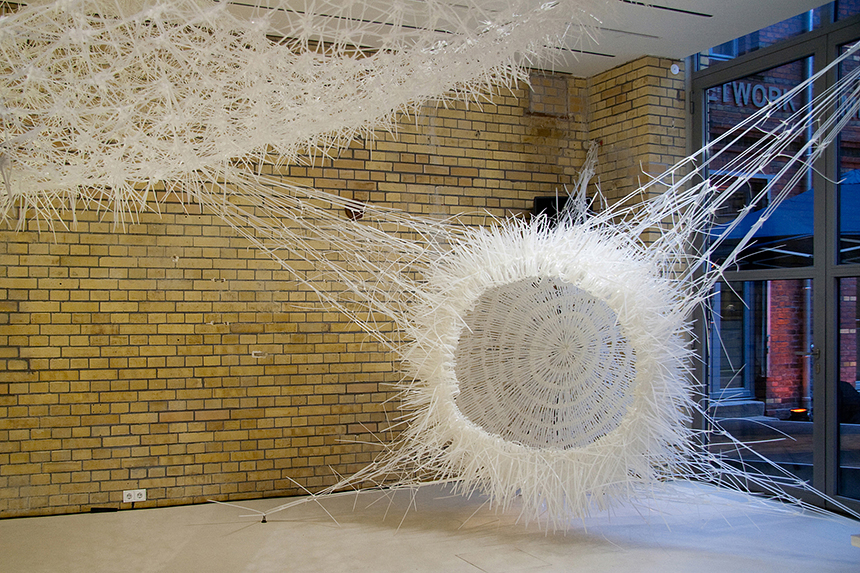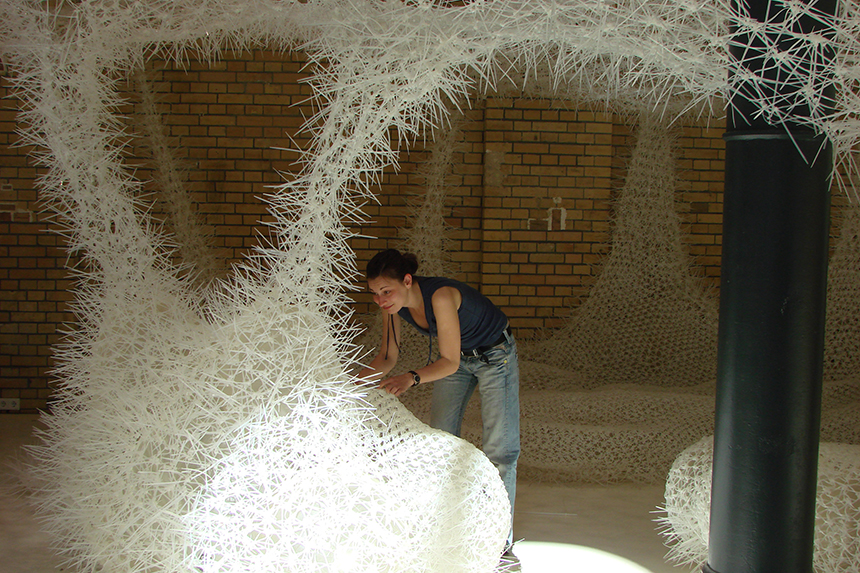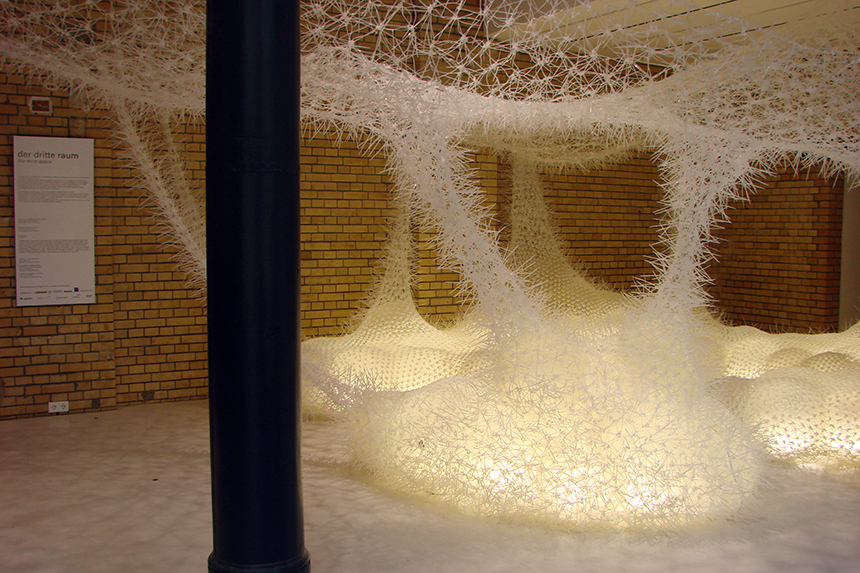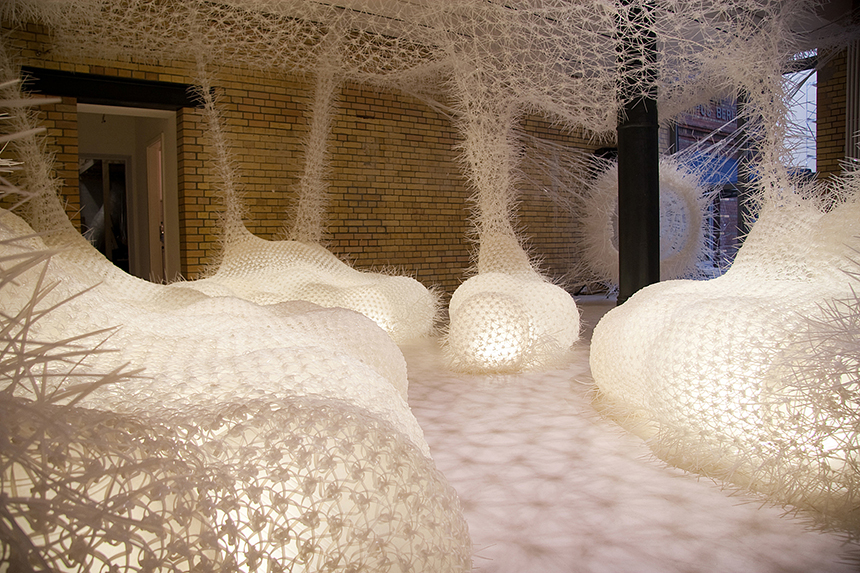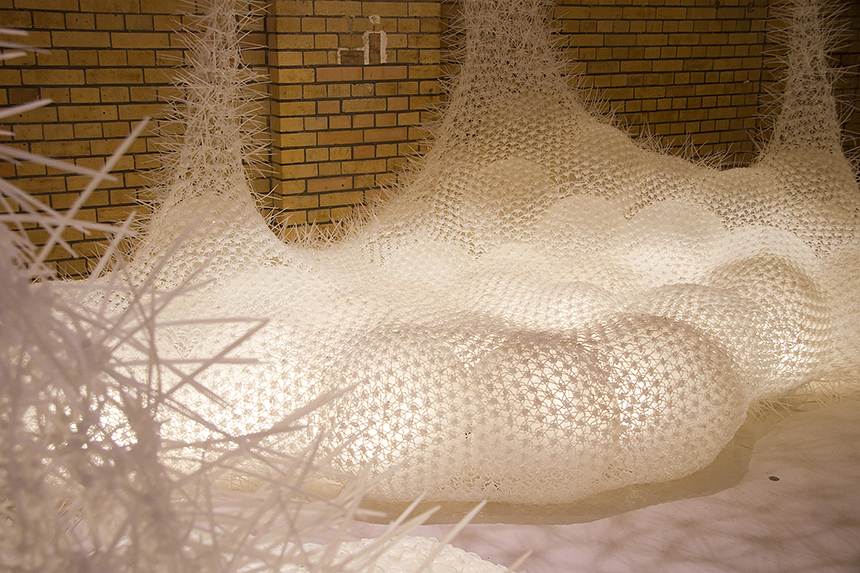Press release on the exhibition
“Der Dritte Raum” / “The Third Space” A spatial installation of the Program in Interior Architecture of the Akademie der Bildenden Künste München / Munich Academy of Fine Arts
An exhibition project organized by Aedes East – International Forum for Contemporary Architecture e.V.
The exhibition is part of the inauguration of the Aedes Network Campus Berlin.
“The Third Space” is an experimental installation created by the Program in Interior Architecture of the Akademie der Bildenden Künste München / Munich Academy of Fine Arts. It was developed in order to convey the program’s transdisciplinary approach on a 1:1 scale. This collaboration of the Professorships of Interior Design, Product Design, and Open Space Design takes up sociologically relevant notions of self-portrayal, community, and retreat and translates them into spatial situations that can be experienced directly by visitors. Can one design spaces without form, without style, and remote from the Zeitgeist?
What are the intrinsic qualities of good design? What is the relationship between an interior space and the surrounding outdoors? This installation not only addresses a specialist public, but also strives to inspire a delight in design and to sensitize a wider public to design values. Visitors are immersed in an abstract-concrete light landscape, enter cocoon-like bird’s nests either singly or in pairs, stand beneath a light shower, and investigate the archaic basic types of huts and hearths in a tent woven from spider-web-style netting. The material point of departure is the simple cable binder, whose application is completely redefined in this context. Working in teams, the group developed an exhibition concept via research into meshwork, patterning, and types of connection. Highlighted by the installation are the astonishing sensual qualities, performance capacities, and flexibility of this simple construction material. The 52 students of the program have not only designed the accessible, 200 m² spatial installation, but also knotted, plaited, and lashed it together with their own hands in circa 16,870 hours from approximately 1,292,300 recyclable cable ties.
Teaching and learning about this material involves exploring sensual experiences with light, color, material, and space – and invokes the landscapes of the future. Through the invention of forms in open space, students have learned to recognize the value of interstitial spaces – both urban and rural! Each practice assignment opens up a special aspect of “reality.” In a fast-paced world, courtyards, roof surfaces, plazas, and passages are spaces of movement. Extensions and conversions are among essential planning tasks. Superimposition and multiple utilizations represent opportunities for modern forms of life. Intelligent responses must be developed to the burning questions of our time. This means learning to pose the right questions, thereby making the right decisions for a given design, the right strategy for its presentation. For students, this means opportunities to discover and develop their own methodologies of design and presentation!
In its configuration, the Program in Interior Architecture at the Munich Academy of Fine Arts is unique. A transdisciplinary field of learning and action, it is defined through the trio of Professorships in Interior Design, Product Design, and Open Space Design. This overlapping of professions mirrors the reality of the present-day working world. A “general studies” that prepares students to work independently and which opens up possibilities. Developed here are methods and processes designed to render palpable the way in which we observe, differentiate, and generate new interconnections. Showcased are the ways decisions are effectuated and evaluated during the design process. The program calls upon students to recognize spatial linkages and to develop complex solutions for solving future tasks. This means acquiring the capacity to generate linkages between interior and exterior, between public and private, between small and large-scale dimensions. A delight in experimentation and a playful but logical elaboration of the assigned problematic generates projects which competently unite artistic-aesthetic and technical-functional aspects.
The participating students are: matthew balon I peter bordihn I eva maria chmel I lisa dell´olio I mariela dettke I alexander deubl I sarah doetsch I léonie droste I yvonne eder I livia fischer I philipp ganter I sven hedrich I regina hoefter I edda huppert I nicole hurt I bianka janezíc I judith jooß I carolin kahler I bianca keck I cornelia kestel I franziska kober I ana köhler I katharina korinth I diana kostova I isabel kowitz I sophia kuhn I konstantin landuris I carolin lang I angela leidl I martin lersch I juan-carlos moya I corinna natter I martina olters I karin panzer I franziska paul I madeleine plass I katrin raesig I alexander rehn I ruth röschenthaler I annemarie schreibner I carolin schultheiss I katharina schuster I ina spöckmaier I kira strehlau I julia streit I martina süsse I marion thoiss I ana valenzuela I hong-key wang I viola weckbach I vera wiedermann I lina winkler
“Dear visitors, this exhibition is accessible, walk-in – and prickly! Watch your eyes! Enter at your own risk,” writes rondo (14/03/2008). Although the leaflet warns of potential complications, it only heightens the reader's curiosity. We circle around a nest-like form which dangles from the ceiling, its rigid spikes extending in all directions like an oversized sea urchin. When seated inside, we are swayed gently back and forth as though on cushions of cotton wadding, peering outside timidly like hatchlings to admire the various art-related cocoons occupying the space – so archaic, yet at the same time so futuristic. These organically-formed entities, whether dropping down or sprawling in all possible directions, seem to have been knitted together from snow-white seaweed or spun skillfully by weaver birds. Closer inspection reveals the DNA of these poetic spatial constructions to be unassuming, interwoven white plastic straps, objects clearly classifiable as the species “common cables binders” available from any building supply store. As banal as this material seems, its handling here is anything else but conventional, and the final results are startling...
Akademie der Bildenden Künste München / Munich Academy of Fine Arts, Akademiestrasse 2-4, 80799 München
Lehrstuhl für Raumgestaltung / Professor for Space Design, Prof. Peter Sapp, Assist. Sandra Schuster, [email protected]
Lehrstuhl für Produktgestaltung / Professor for Product Design, Prof. Carmen Greutmann-Bolzern, Prof. Urs Greutmann, Assist. Jörg Kürschner, [email protected]
Lehrstuhl für Gestalten im Freiraum / Professorship for Open Space Design, Prof. Maria Auböck, Assist. Christoph Brenner, [email protected], Installation “Der Dritte Raum” / “The Third Space”
Diese Ausstellung wurde ermöglicht mit der großzügigen Unterstützung von:
